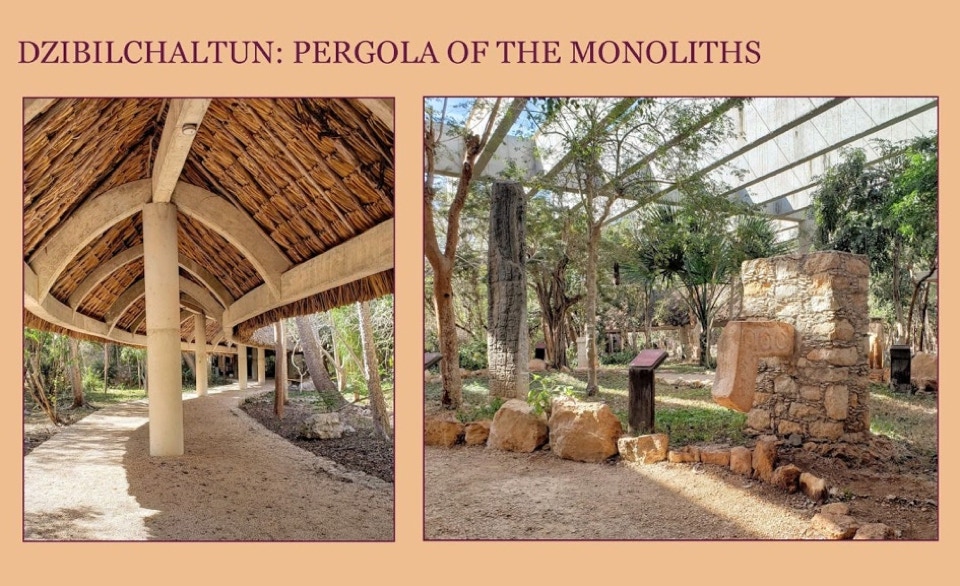
10. PERGOLA OF THE MONOLITHS, MUSEUM DZIBILCHALTUN What Dzibilchaltun lacks in impressive buildings it compensates for by its outstanding display of Mayan sculpture from sites across the peninsula. A shaded walk (on the left) thatched like a traditional "xanil nah" or Mayan house leads to the "Pergola of the Monoliths," a sculpture garden and a indoors museum. (right.) In the foreground is a nose (actually upper lip) from a mask of Chac, the rain god, especially venerated in the arid Yucatan, from the Temple of the Seven Dolls: It is decorated with solar disks and a K'awil, the "mannikin scepter" or "flare" god, a symbol of royal authority carried by all Mayan kings on stelae, attesting to the totemic powers invested in both the stone and sovereign. To its left, is a tall stela from Quintana Roo on the Caribbean (eastern) coast of the peninsula, entirely covered with a calendrical hieroglyphic inscription which dates it to the equivalent of 594 C.E., still during the Early Classic period (300-600)